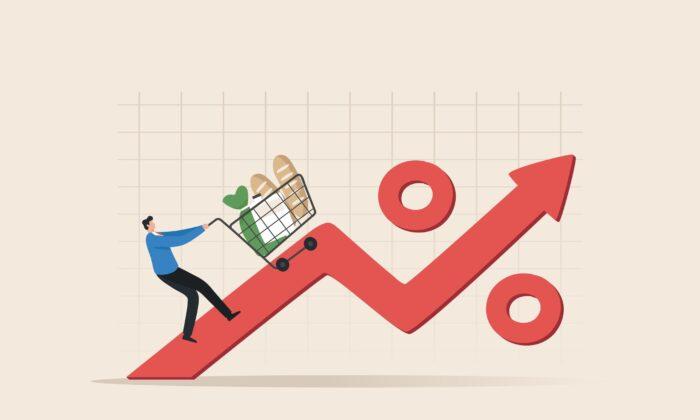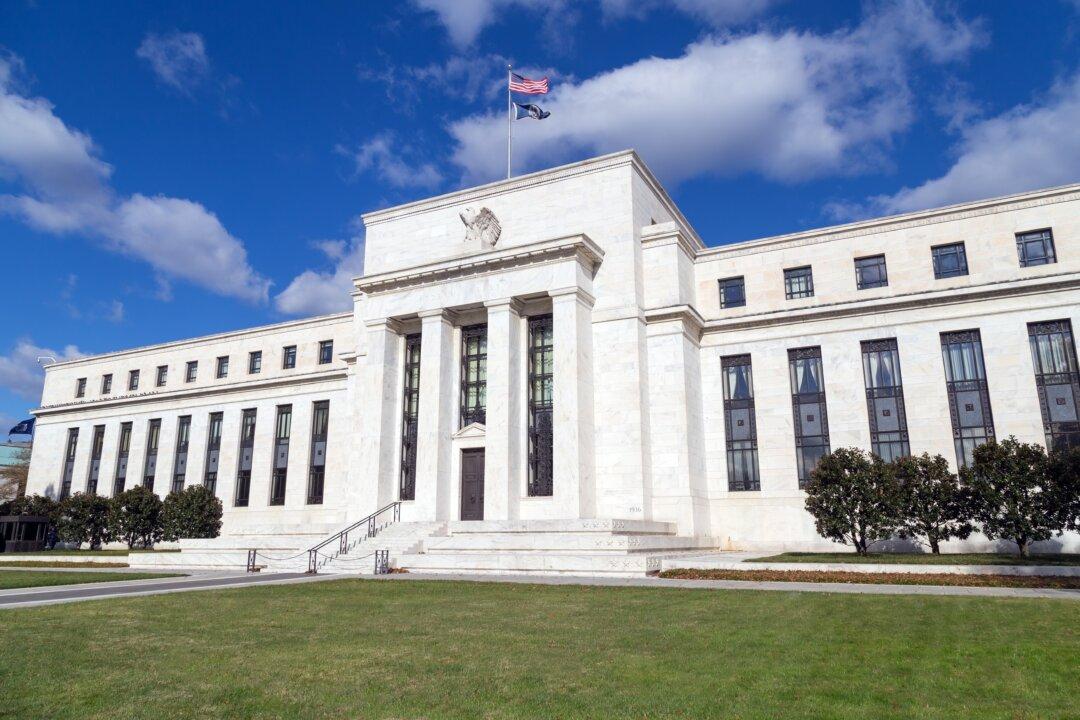Last week was bad for those who have been promising that our inflation problems are going away. All data from January suggest exactly the opposite.
The headlines for consumer prices were all about “cooling,” “firming,” “easing,” “moderating,” and another dozen or so weasel words to disguise the reality that January’s numbers had gained steam over December 2022 and November 2022. It didn’t look good. Headline writers were scrambling all day to figure out how to say “it’s bad” without saying “it’s bad.”
But two days later, when producer price data came out, there was simply no denying the reality. The numbers looked terrible, so awful that even the Department of Labor had to concede that “the index for final demand goods moved up 1.2 percent in January, the largest increase since rising 2.1 percent in June 2022.”
This absolutely wasn’t part of the plan.
![(Data: Federal Reserve Economic Data [FRED], St. Louis Fed; Chart: Jeffrey A. Tucker)](/_next/image?url=https%3A%2F%2Fimg.theepochtimes.com%2Fassets%2Fuploads%2F2023%2F02%2F16%2F1-JAT-2023.02.16-1200x933.png&w=1200&q=75)
The Federal Reserve has been battling inflation for a year; it’s supposed to soft-land, not reaccelerate. The details are revealing, too. A major part of the increase in prices that businesses pay comes not from food (thankfully) but energy, once again.
“Nearly one-third of the January rise in the index for final demand goods can be traced to prices for gasoline, which increased 6.2 percent. The indexes for residential natural gas, diesel fuel, jet fuel, soft drinks, and motor vehicles also moved higher,“ the producer price index press release reads. ”Conversely, prices for fresh and dry vegetables decreased 33.5 percent. The indexes for residual fuels and for basic organic chemicals also declined.”
Following all of this gives you the picture of a hot potato being passed from sector to sector. It comes and goes in one sector, only to appear in another. And the relationship between producer and consumer prices is also fascinating to watch. Of course, producers would love nothing better than to “pass on” higher costs to consumers, but that simply isn’t possible without causing or at least risking a change in demand that would hurt profitability.
For two years, producers have been working to shoulder the burden without overtly raising prices dramatically. They’ve not always gotten away with it. We’re all too aware of the endless extra fees, the smaller packaging, the reduced services, and the general degradation of the consumer experience.
Another trend we’ve seen develop is for large businesses to offload exorbitant labor costs in the form of terminations. That helps, but based on what we’re seeing now, they need to be more. This is because business is dealing with higher costs in the area that all share equally, namely the energy to run the enterprise. This is going to hit consumers down the line, which suggests that we’re far from complete with this grueling inflation.
Early in the lockdowns, producers had it going pretty well until the price increases came. They ate as much as they could before the same started hitting consumers. It was the prices that businesses pay that gave the long momentum to cause the two-year index for consumer prices to shoot up by 15.4 percent. The optimism that this would settle down was largely based on what seemed to be merciful trends in the producer sector.
![(Data: Federal Reserve Economic Data [FRED], St. Louis Fed; Chart: Jeffrey A. Tucker)](/_next/image?url=https%3A%2F%2Fimg.theepochtimes.com%2Fassets%2Fuploads%2F2023%2F02%2F16%2F2-JAT-2023.02.16-1200x939.png&w=1200&q=75)
But with that starting to change, we could see even more momentum for all prices over the coming months. That’s not the news you wanted to hear!
How is this possible, given that the money supply has actually started to shrink and do so rather dramatically? Well, the problem is that you can’t make what has already happened go away simply because you change strategy. A cup of salt in the soup is going to ruin the result no matter how many potatoes you add to soak it up.
Bottom line: The Fed added $6.5 trillion to the money stock from lockdowns until April 2022. Looked at from that long perspective, the Fed has only begun to fight the inevitable consequences.
There’s another factor here about which no one seems to be speaking, namely velocity. That’s the pace at which money changes hands. You can print up trillions of dollars, but if it’s all stuffed in mattresses, it won’t drive price increases. Once it starts to circulate, it’s another matter. So the pace of circulation can make a huge difference.
And so it has. Even as M2 has declined, velocity is going up and up, thereby wiping out what would be the deflationary effect of a declining money supply.
![(Data: Federal Reserve Economic Data [FRED], St. Louis Fed; Chart: Jeffrey A. Tucker)](/_next/image?url=https%3A%2F%2Fimg.theepochtimes.com%2Fassets%2Fuploads%2F2023%2F02%2F16%2F3-JAT-2023.02.16-1200x954.png&w=1200&q=75)
The trouble is the damage that has already been done still needs to bleed its way through all economic structures. The real fear here is that the Fed has truly lost control, if it ever had it. It can raise rates and shrink the money supply, even clean up the Fed’s balance sheet, all they want, but it might not stop the momentum already in place.
That’s the real fear of the latest producer price index data.
And this is why Wall Street freaked out last week. It means more panic by the Fed. So much for dialing back on the rate increases. They have to get much higher soon if the Fed stands any chance of beating back this inflationary beast.
The Biden administration can no longer blame Putin, corporations, gas companies, and so on. This is a money problem, being made worse by a supply problem owing to Biden administration policies.







